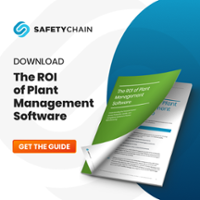Top Key Performance Indicators for Food Industry
All food and beverage manufacturers have stringent food safety and quality requirements unique to their products, plants, and customer expectations. With the correct balance and prioritization of key performance indicators (KPIs), Plant Managers can reduce costs and increase capacity in their facilities.
Key Performance Indicators for Food Industry
Defining the right KPIs is imperative to minimizing costs, maximizing profitability, achieving compliance, and ultimately, the success of your business overall. Once you start measuring these KPIs, you can use this valuable data to drive continuous improvement.
KPIs can be grouped into 4 major categories:
Safety KPIs
Quality KPIs
Yield KPIs
Productivity KPIs
1. Safety KPIs
Safety KPIs help you measure and manage both people and products, to ensure your operation is compliant. These KPIs include indicators like total incident rates, accident rates, customer complaints, and more.
In particular, it's important to measure the number of non-compliance events -- the number of times your plant or facility operated beyond the regulatory compliance guidelines. non-compliance events is among the most essential indicators used to analyze, and ultimately improve, compliance efforts for regulatory requirements like FSMA.
Workplace & Food Safety Systems KPIs
Although each facility is different, these are some of the most common safety KPIs to track.
Human/Workplace Safety KPIs
- Total incident rate
- Lost time incidents
- Workers compensation costs
- Quantity of accidents and near-misses
- Quantity of OSHA and EPA non-compliances
Food Safety KPIs
- Customer complaint trend analysis
- Microbiological trends
- HACCP CCP/Preventive Control deviation history
- Regulatory compliance
- Internal and external audit compliance
- Recall avoidance and foodborne illness prevention
Of course, while safety is paramount in food and beverage facilities, it often goes hand-in-hand with quality, which brings us to our next point: quality.
2. Quality KPIs
It would be impossible to improve or measure the cost of quality without the right KPIs. Measuring items such as customer complaint trends to supplier quality costs can help reduce a plant's bottom line.
Reject ratio is one of the most informative quality KPIs for reducing costs. While scrap is an inherent aspect of production processes, minimizing rejected materials is important to meeting profitability goals. Analytics can help you identify whether the amount of scrap being produced falls within tolerable limits. Of course, these are just a few of the many possible KPIs that can be measured through analytics. With software designed for food and beverage companies, you can track the performance of a broad range of data points to ensure your food safety and quality requirements are being met consistently.
Quality KPIs To Measure
- Right-first-time pass rate
- Customer complaint trend analysis
- Nonconforming product, including incidents, quantities, and cost
- Supplier quality cost
- Customer reject RMA cost check Sensory evaluations %
- Shelf life results % check Label compliance %
3. Yield KPIs
Yield is a quality measurement that determines the percentage of products that are correctly manufactured according to specifications without rework or scrap. Yield is informed by throughput, a measurement of the volume of products being made on a machine, unit, line, or entire plant over a period of time. With digital plant management, you can implement real-time Statistical Process Control (SPC) to monitor against control and specification limits, ensuring every shift achieves an efficient quality output.
Yield KPIs to Measure
- Process yields at every step of the manufacturing process
- Packaging check Product net giveaway
- Product waste loss process %
- Overall waste loss %
4. Productivity KPIs
Productivity KPIs help plant management pinpoint areas of improvement and adjustment before becoming an issue that affects production. For example, a good way to measure overall productivity is the ratio of downtime to operating time. Too much downtime likely indicates a need for action, whether it’s to improve processes or upgrade equipment.
Productivity KPIs To Measure
- Line standards, outputs, and efficiencies
- Volume throughput check Capacity utilization
- Total labor recovery
- Overall equipment effectiveness (consistency of production availability of time multiplied by production rate, multiplied by your quality factor, or AxPxQ)
- Department and line staffing standards
- Schedule attainment and changes
- Maintenance availability (downtime/operating
- Customer fill rate and on-time delivery rate
Download our free KPI eGuide to understand more about critical KPIs you plant can't afford to overlook.


